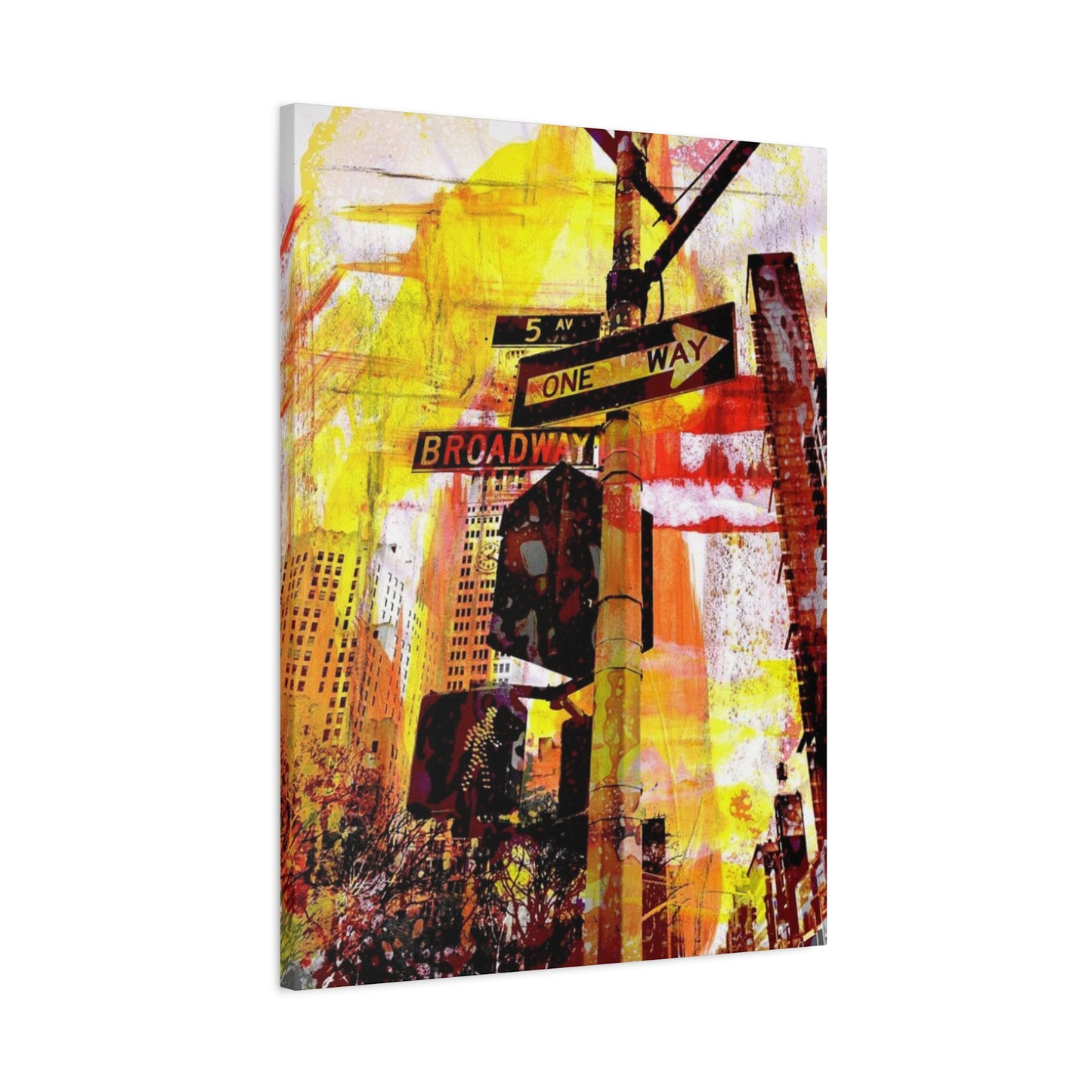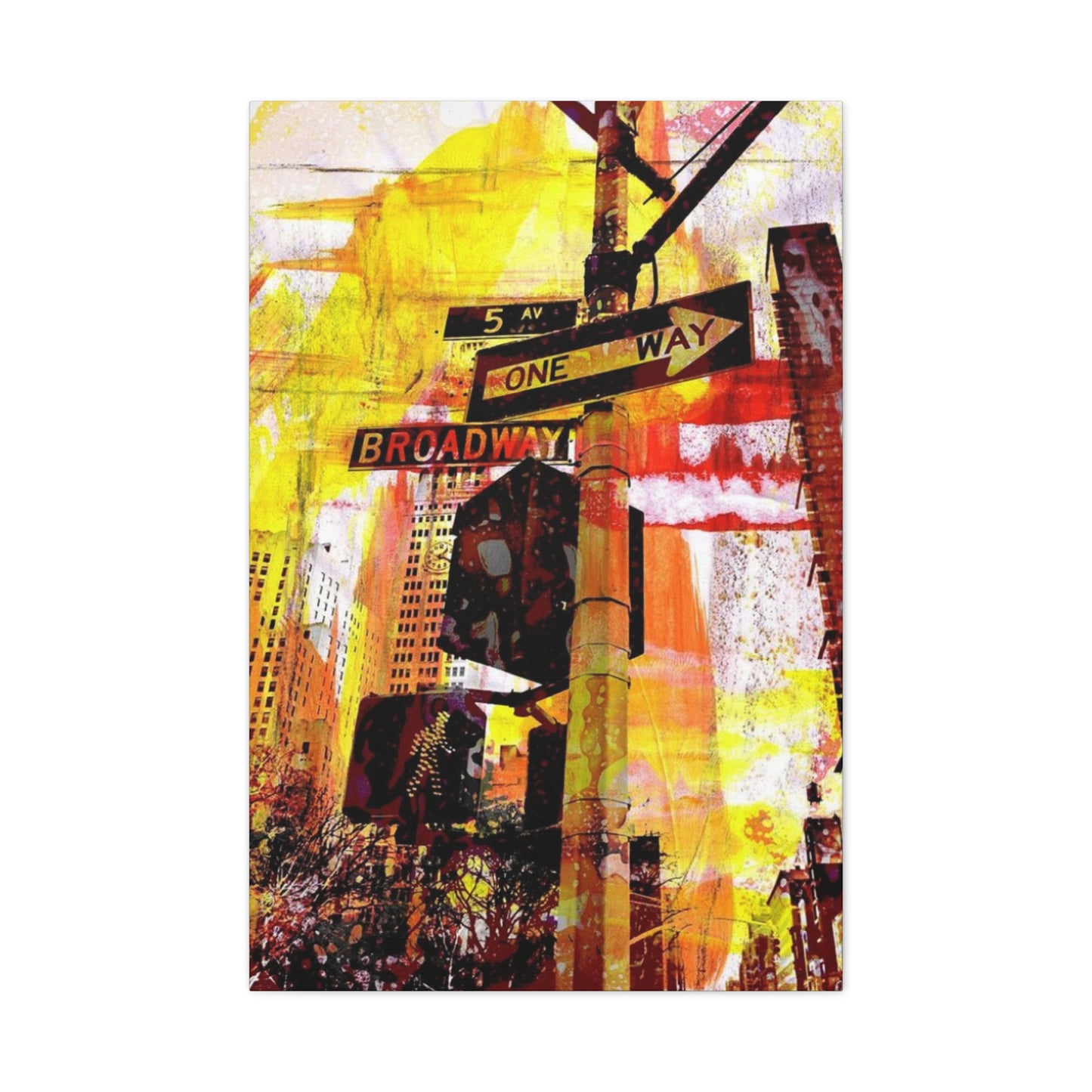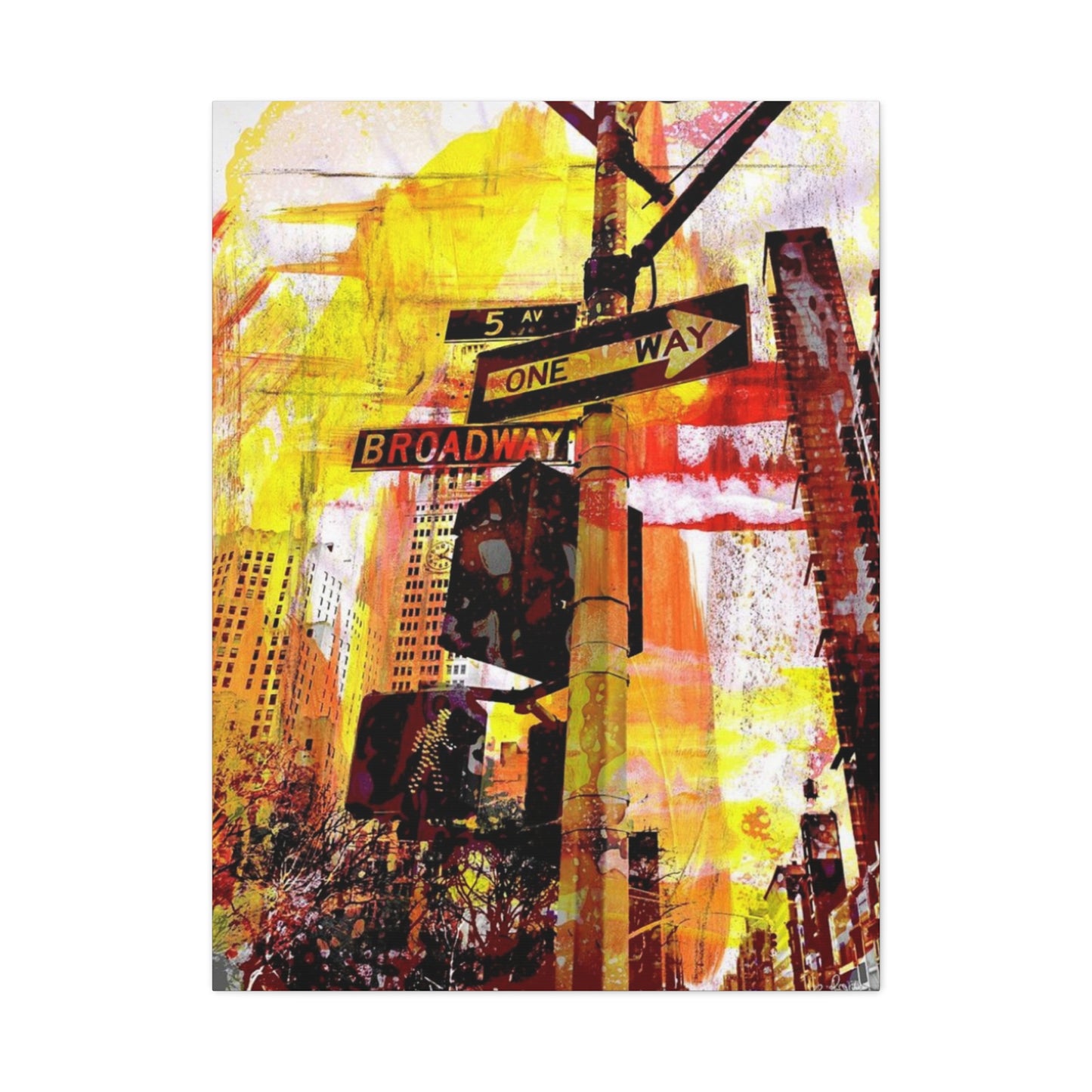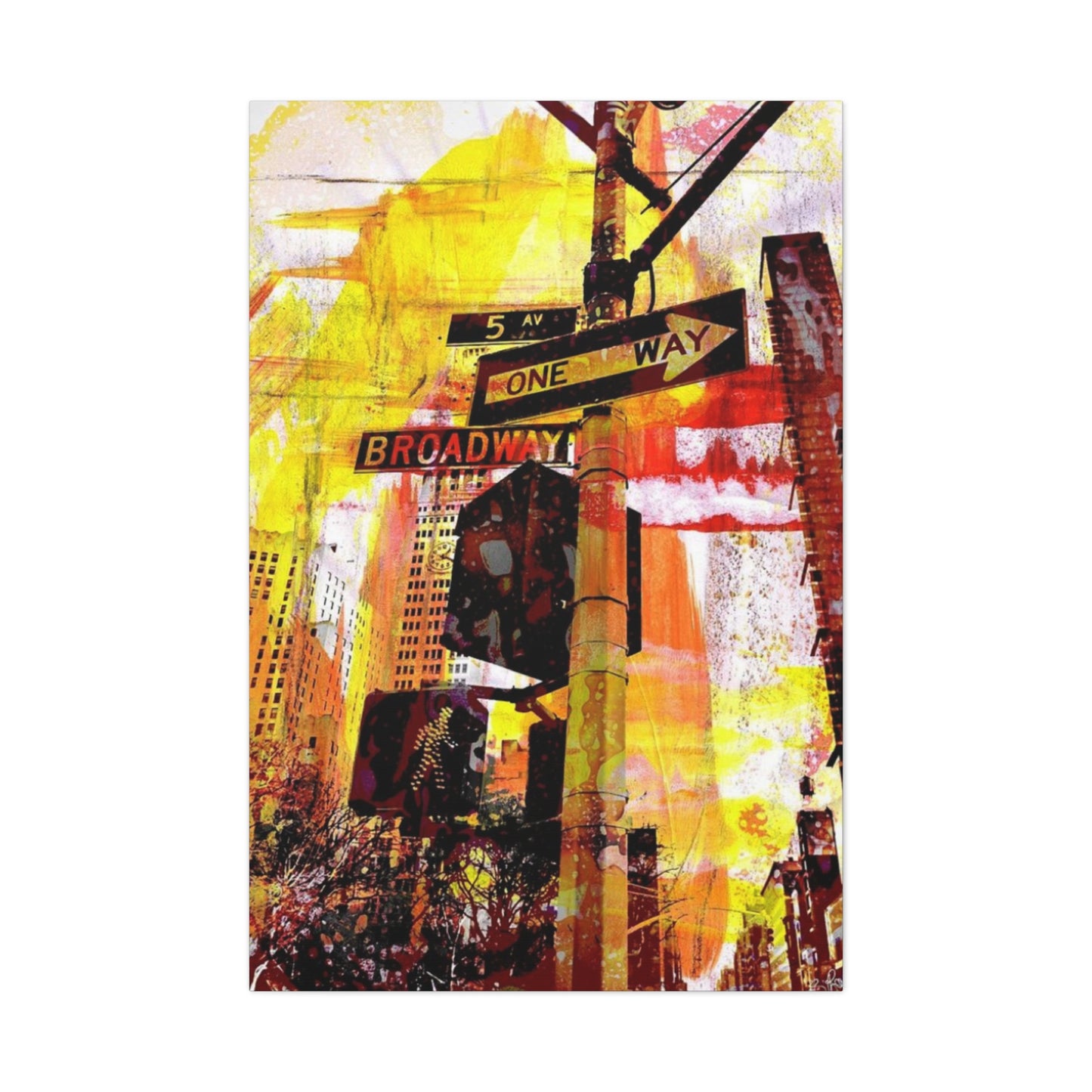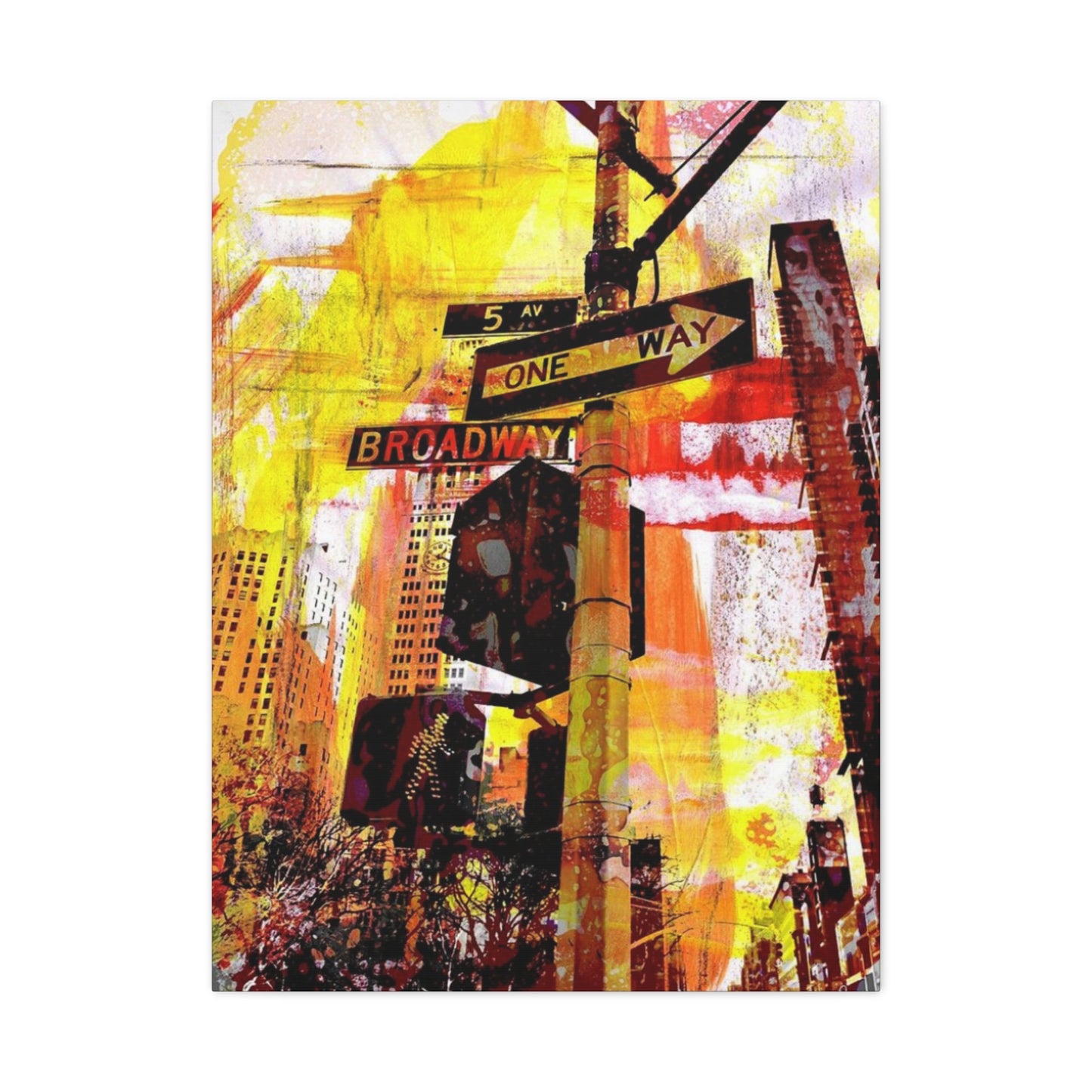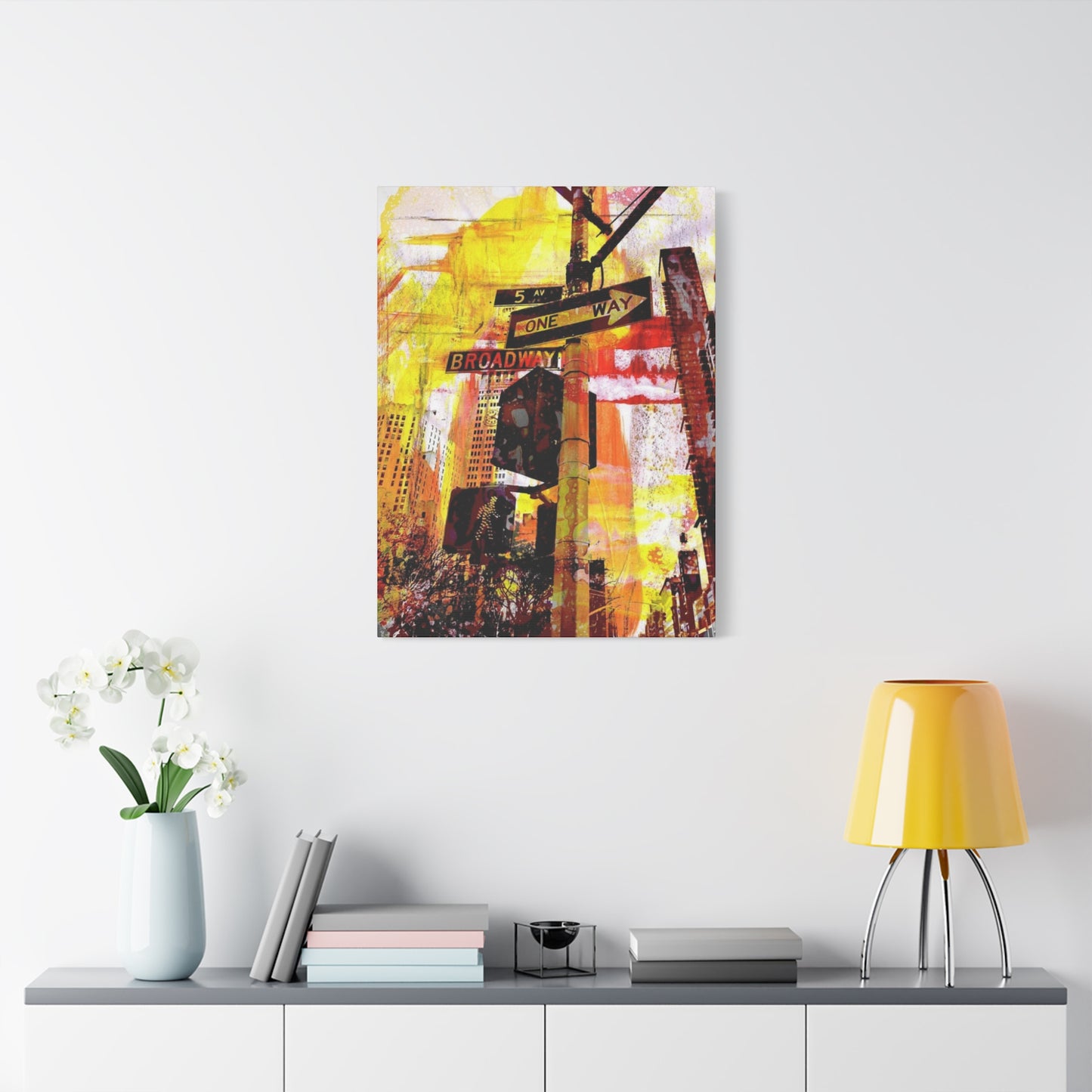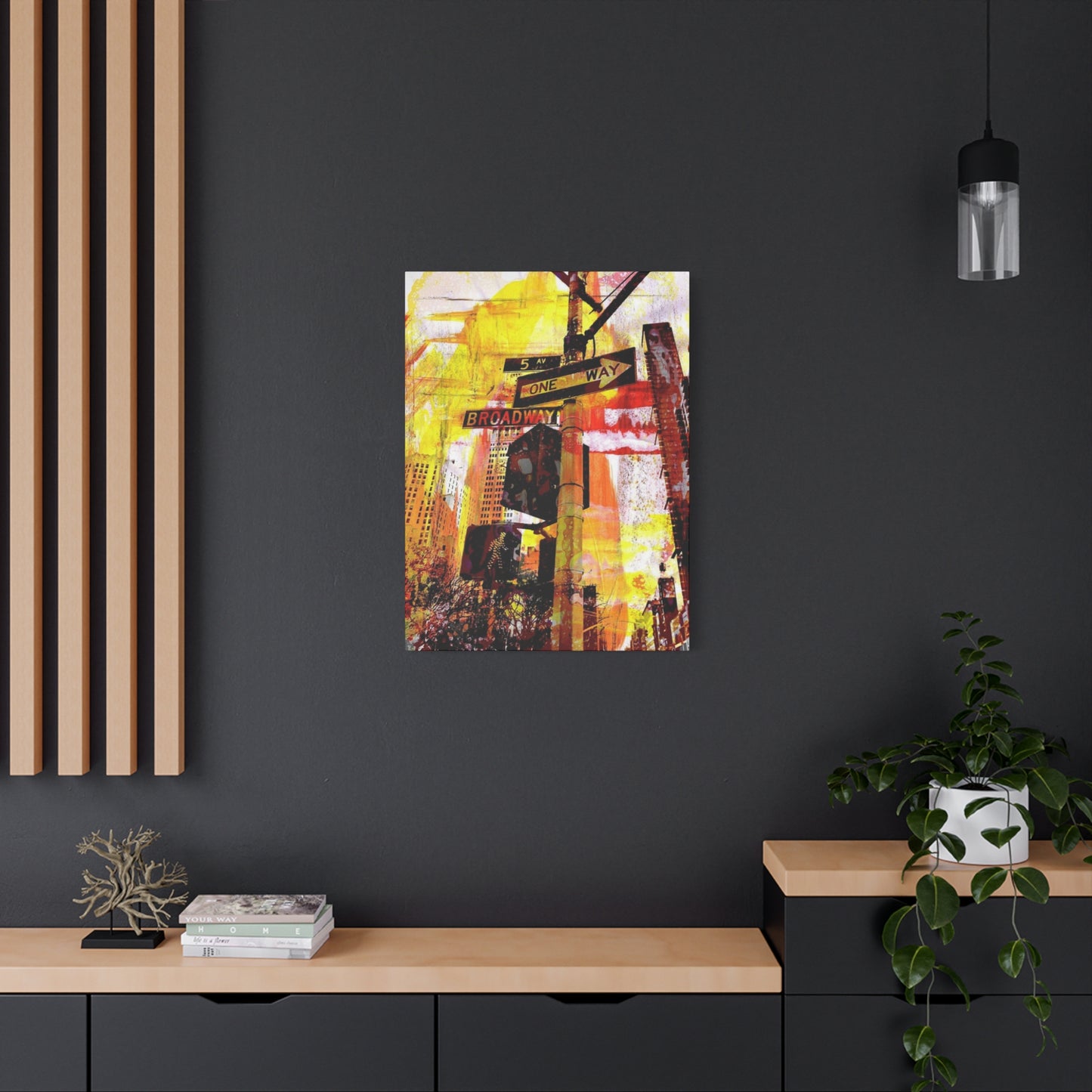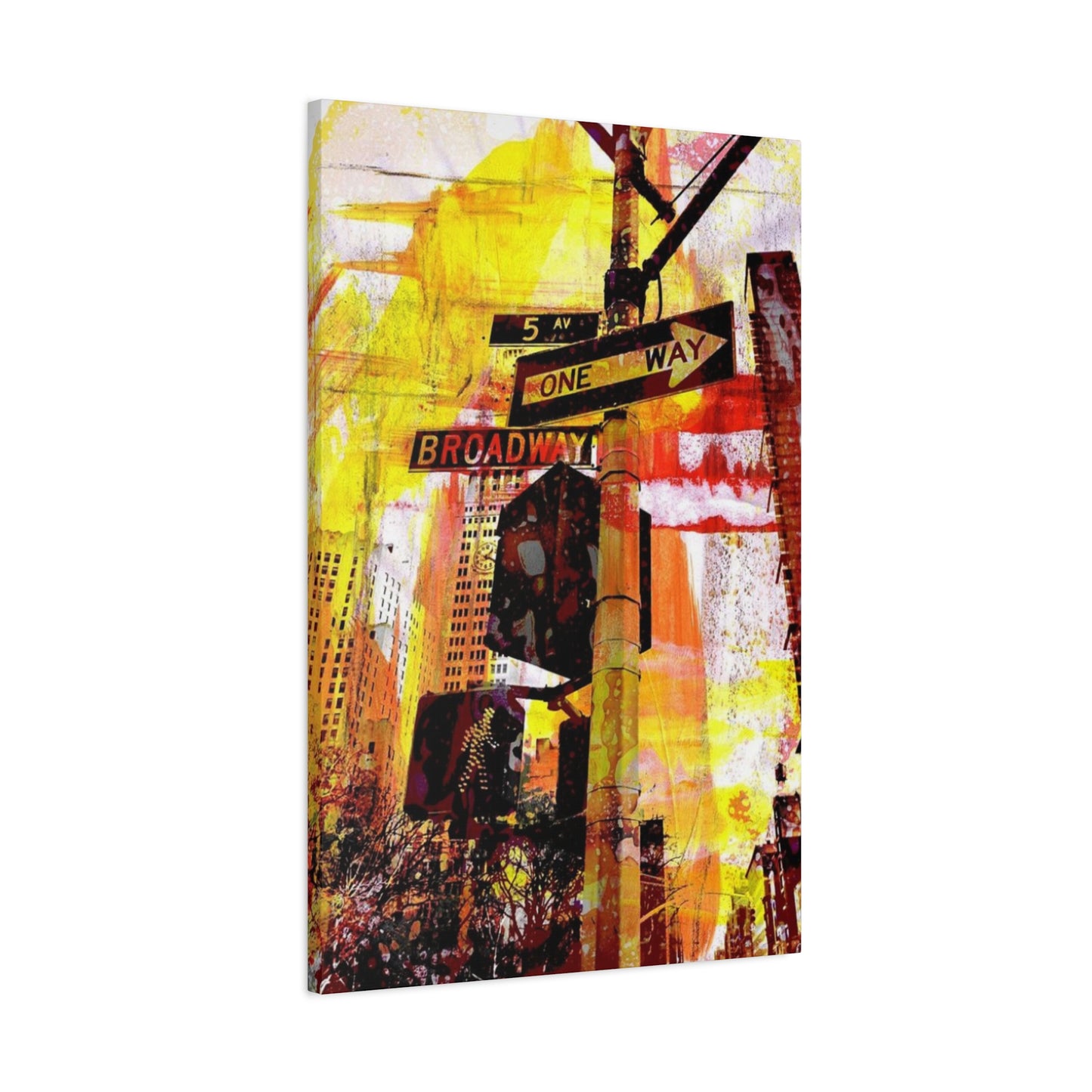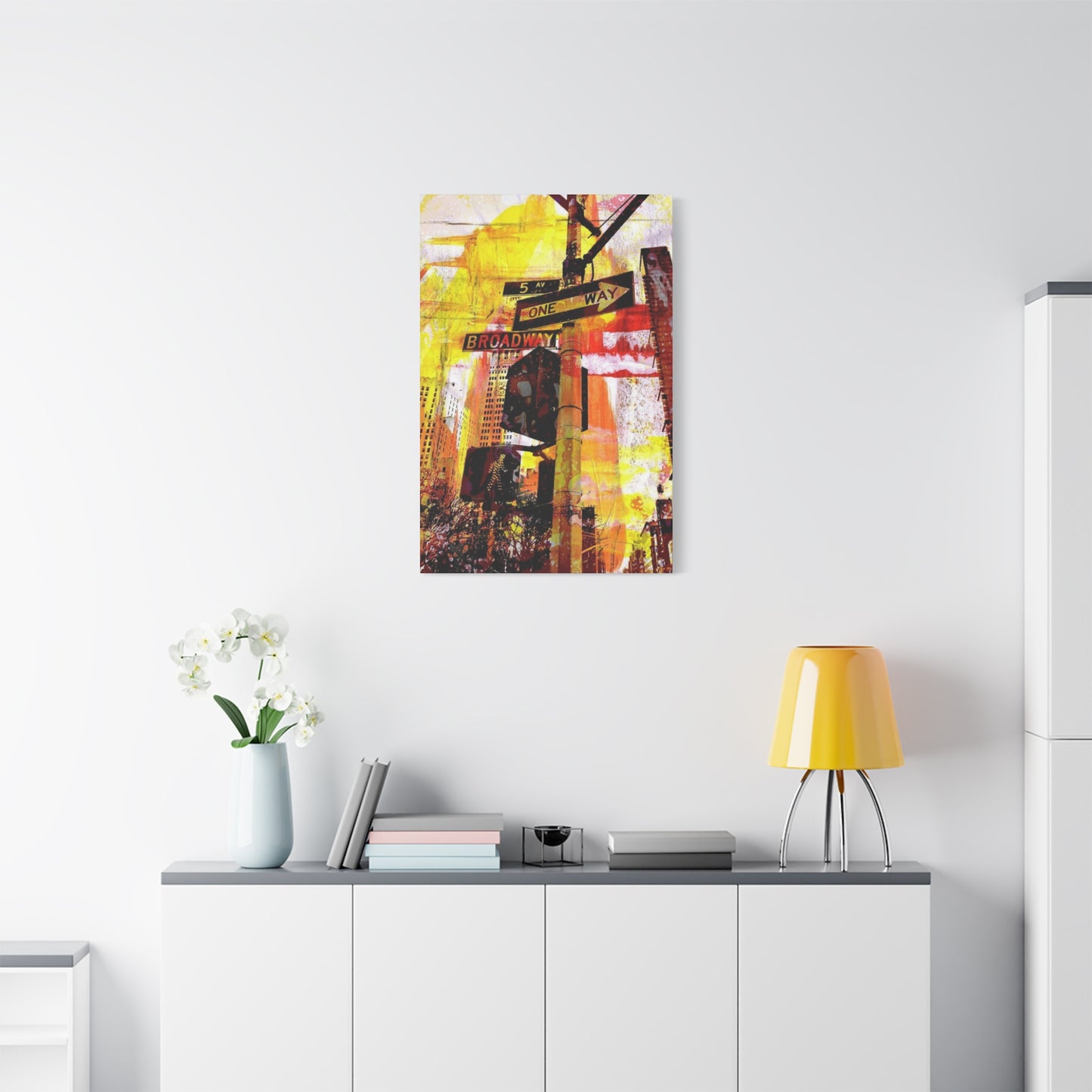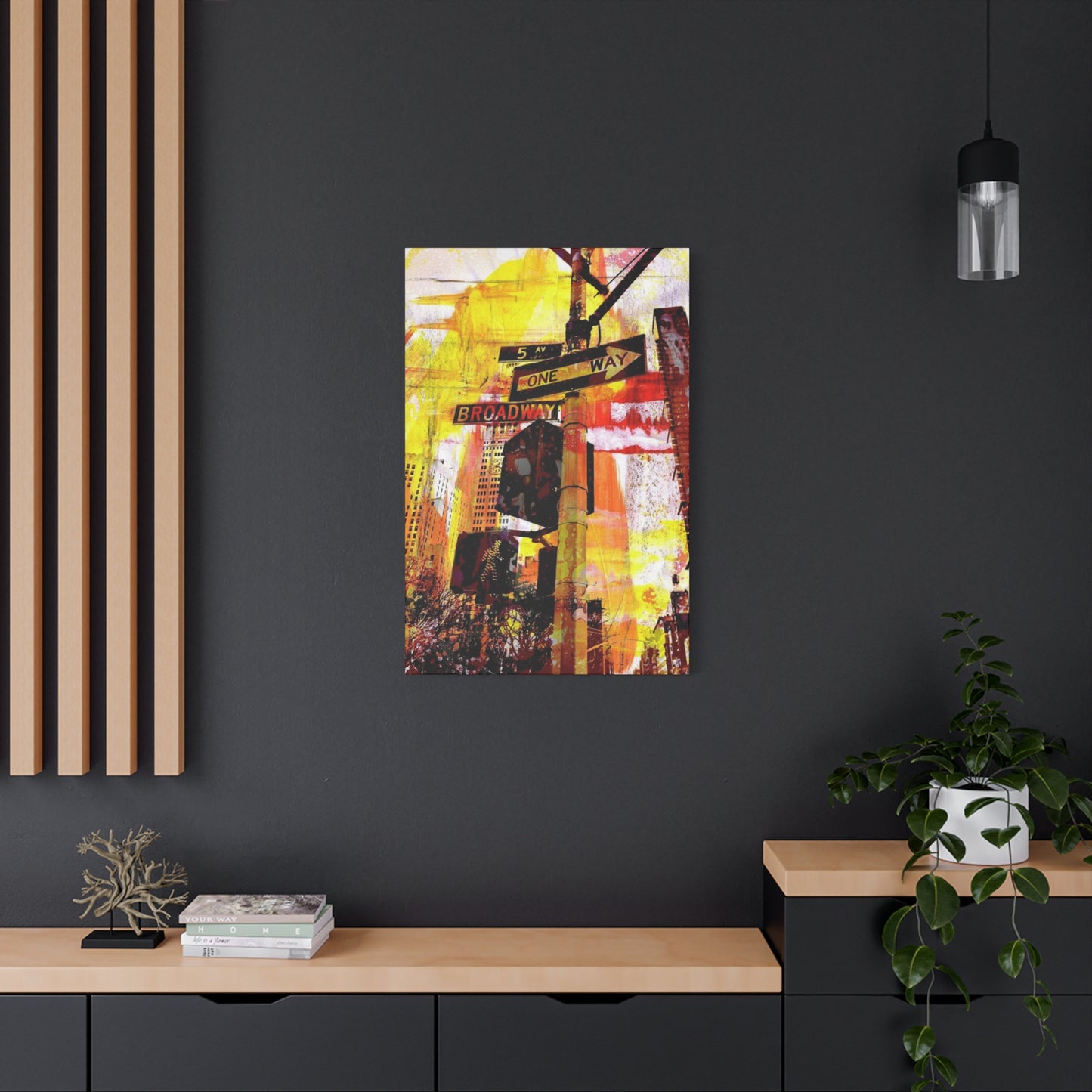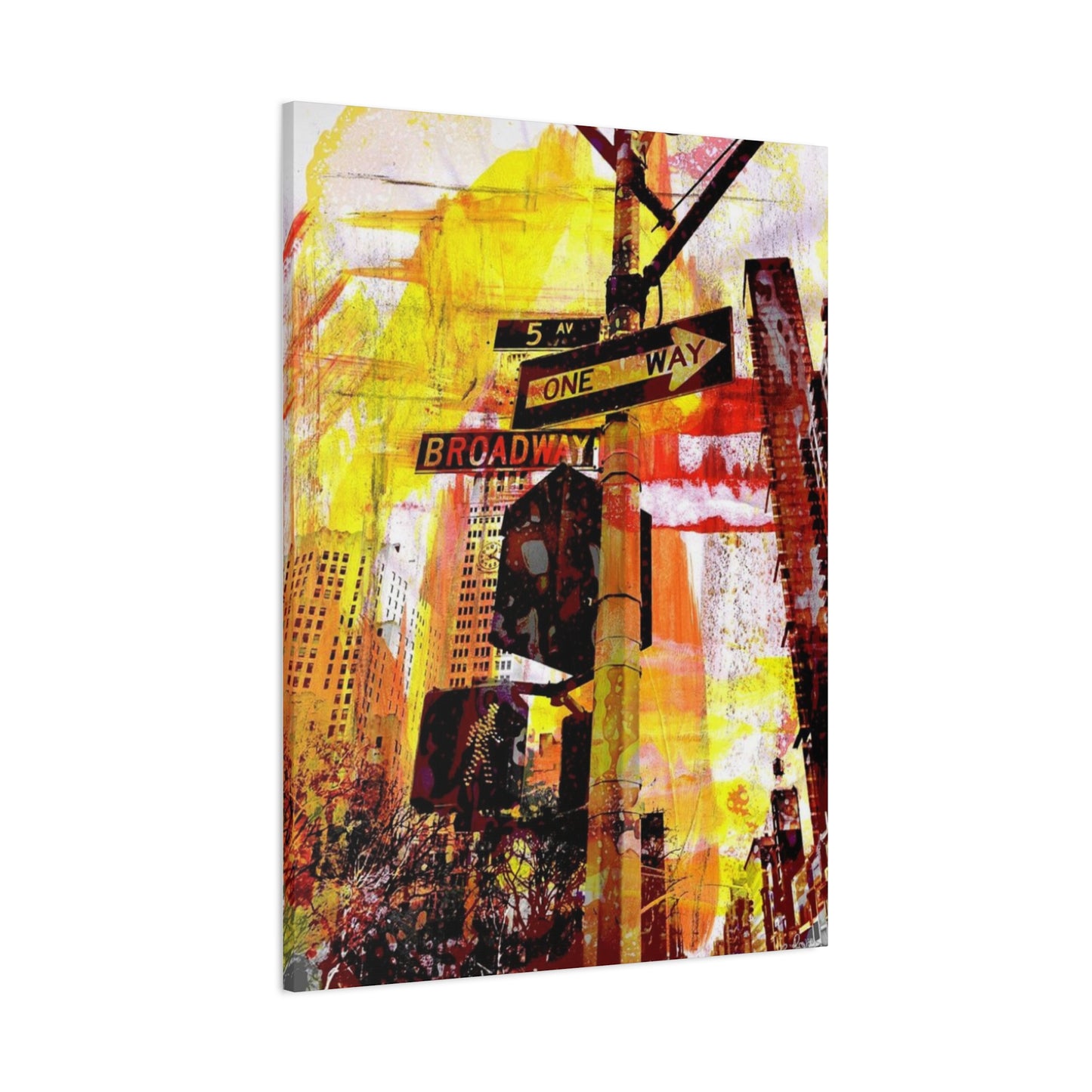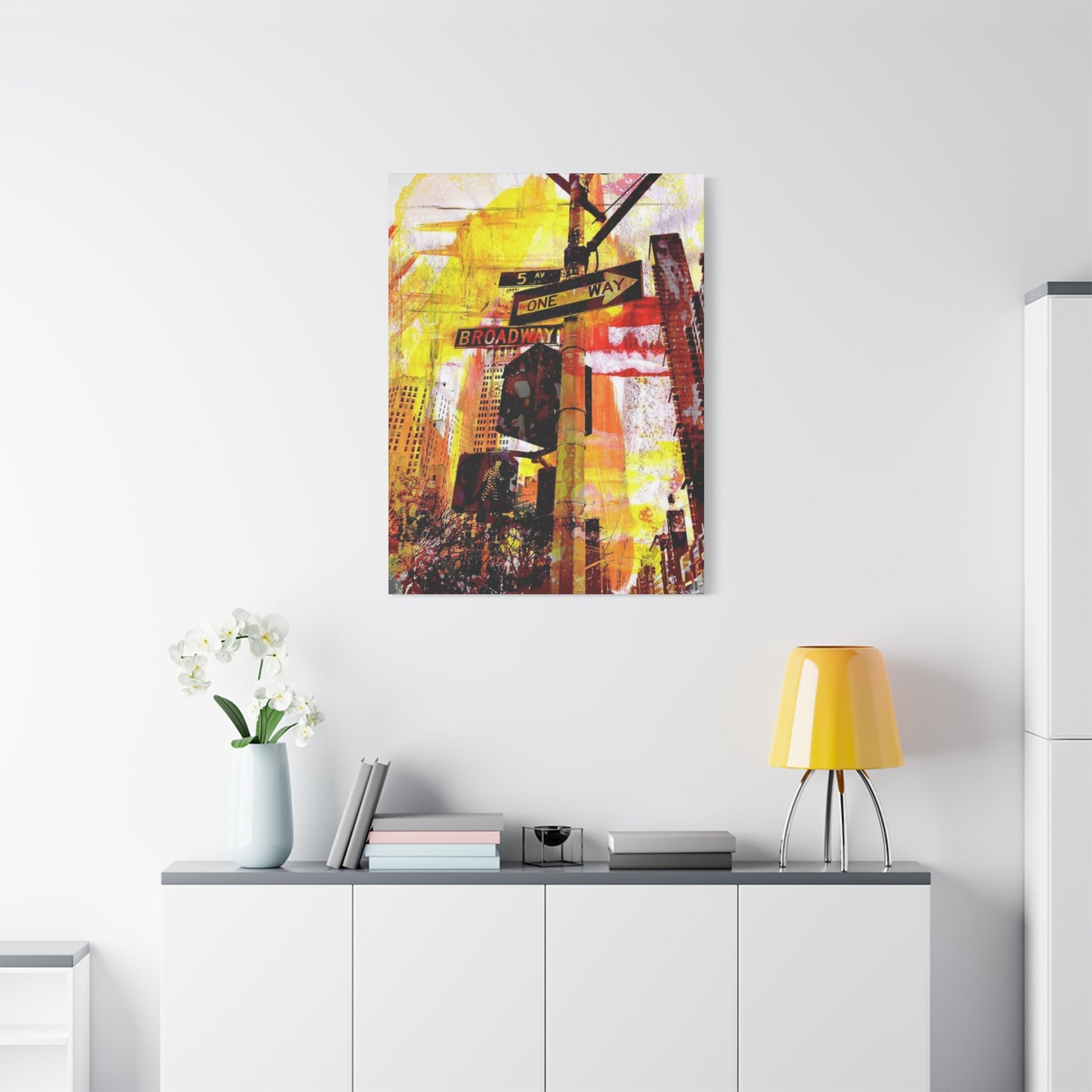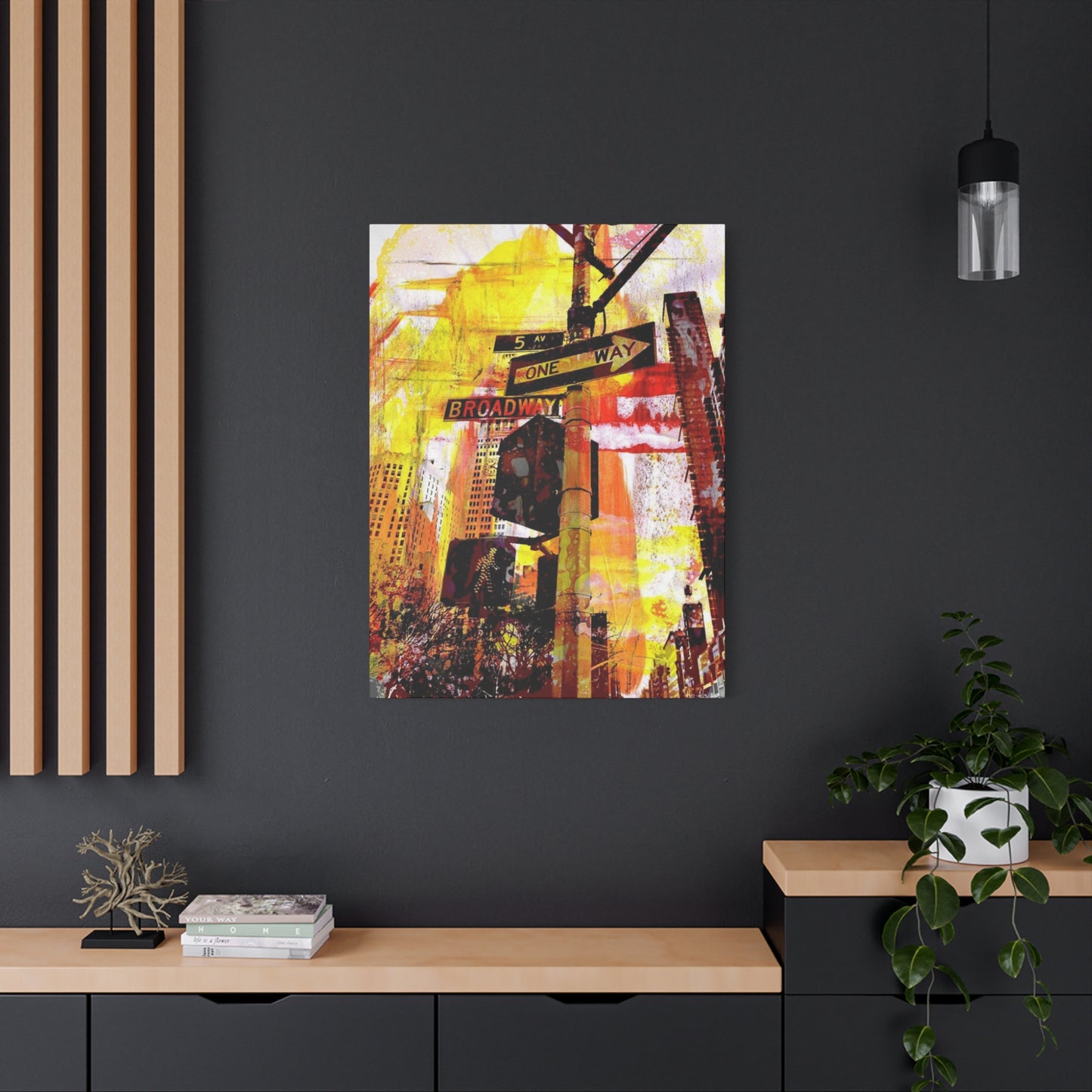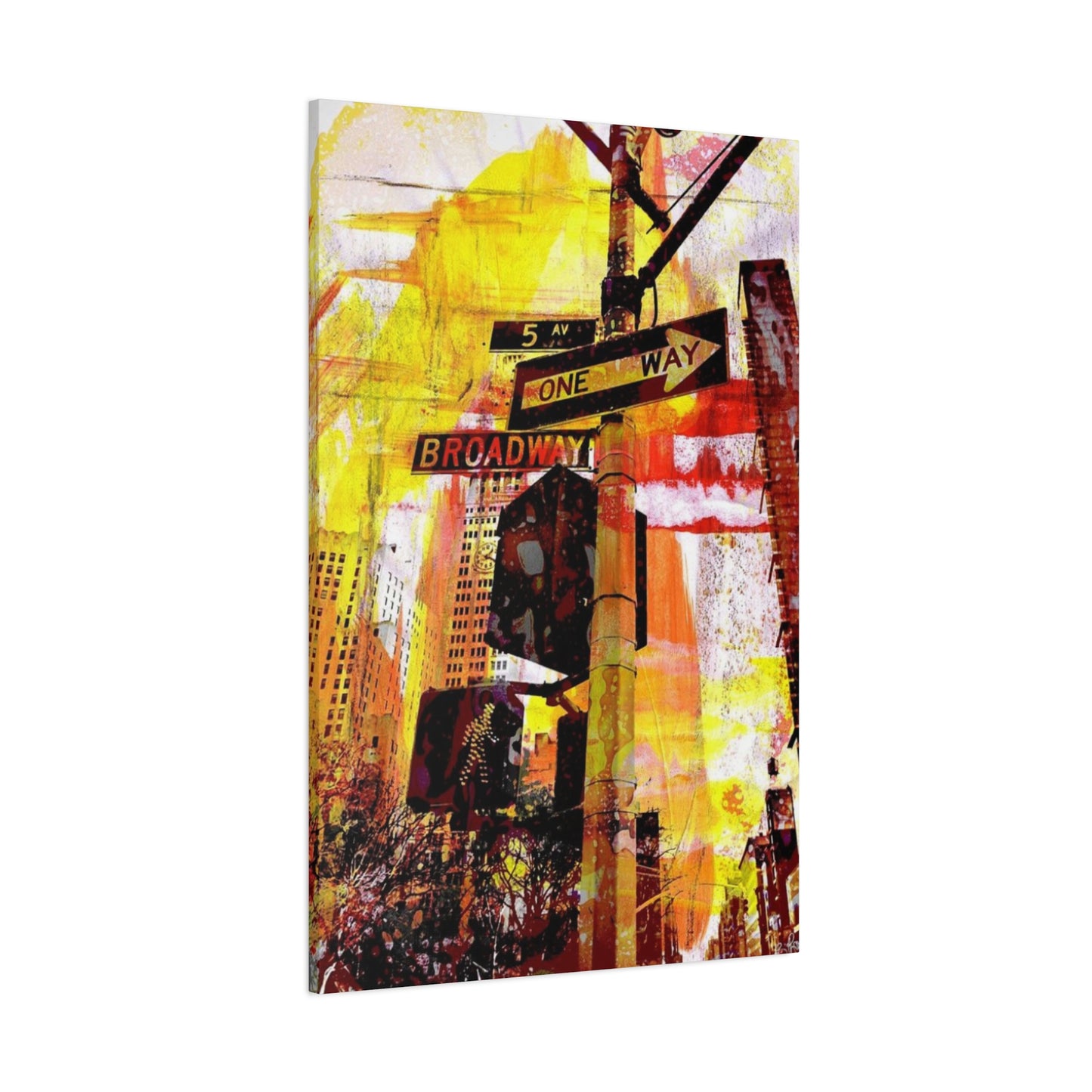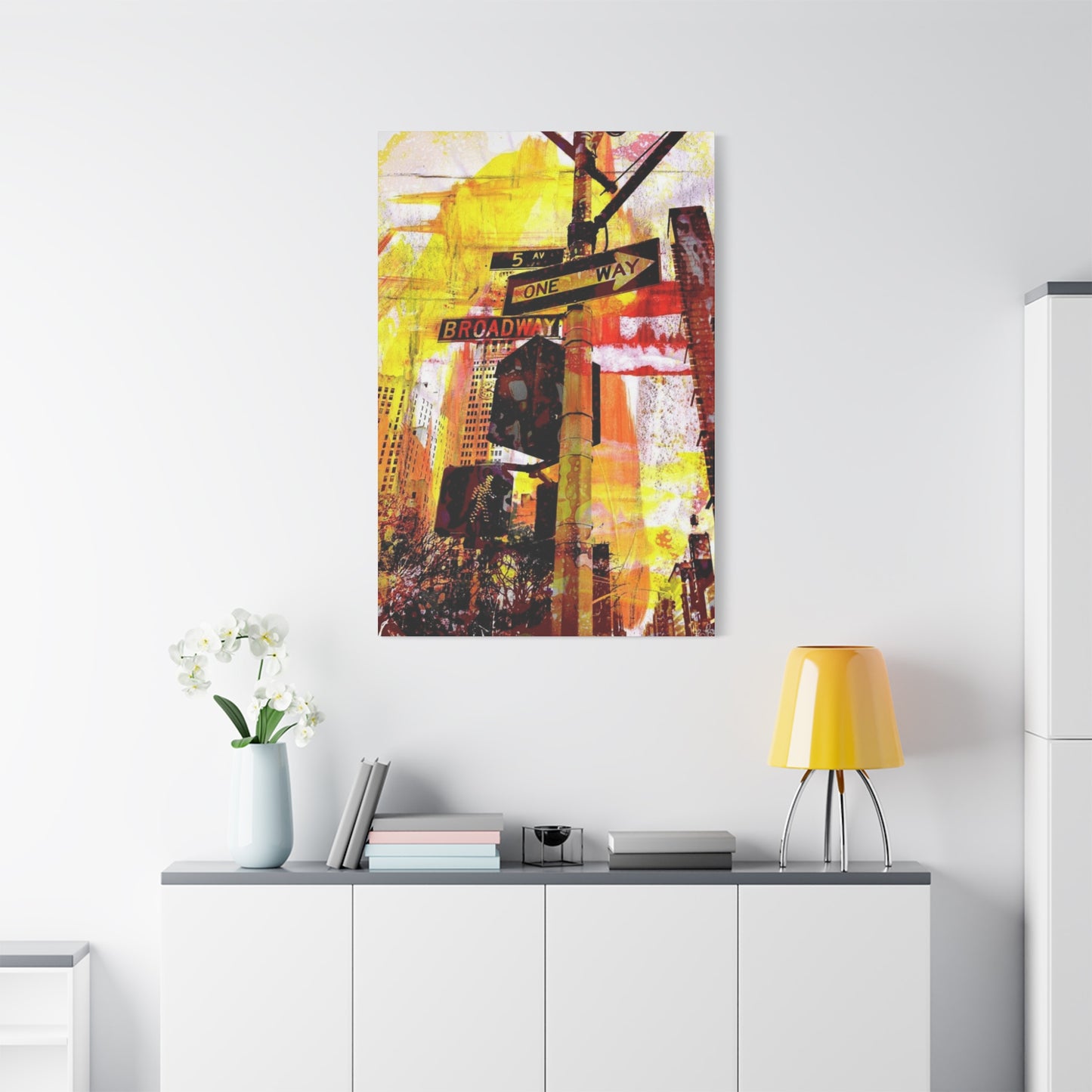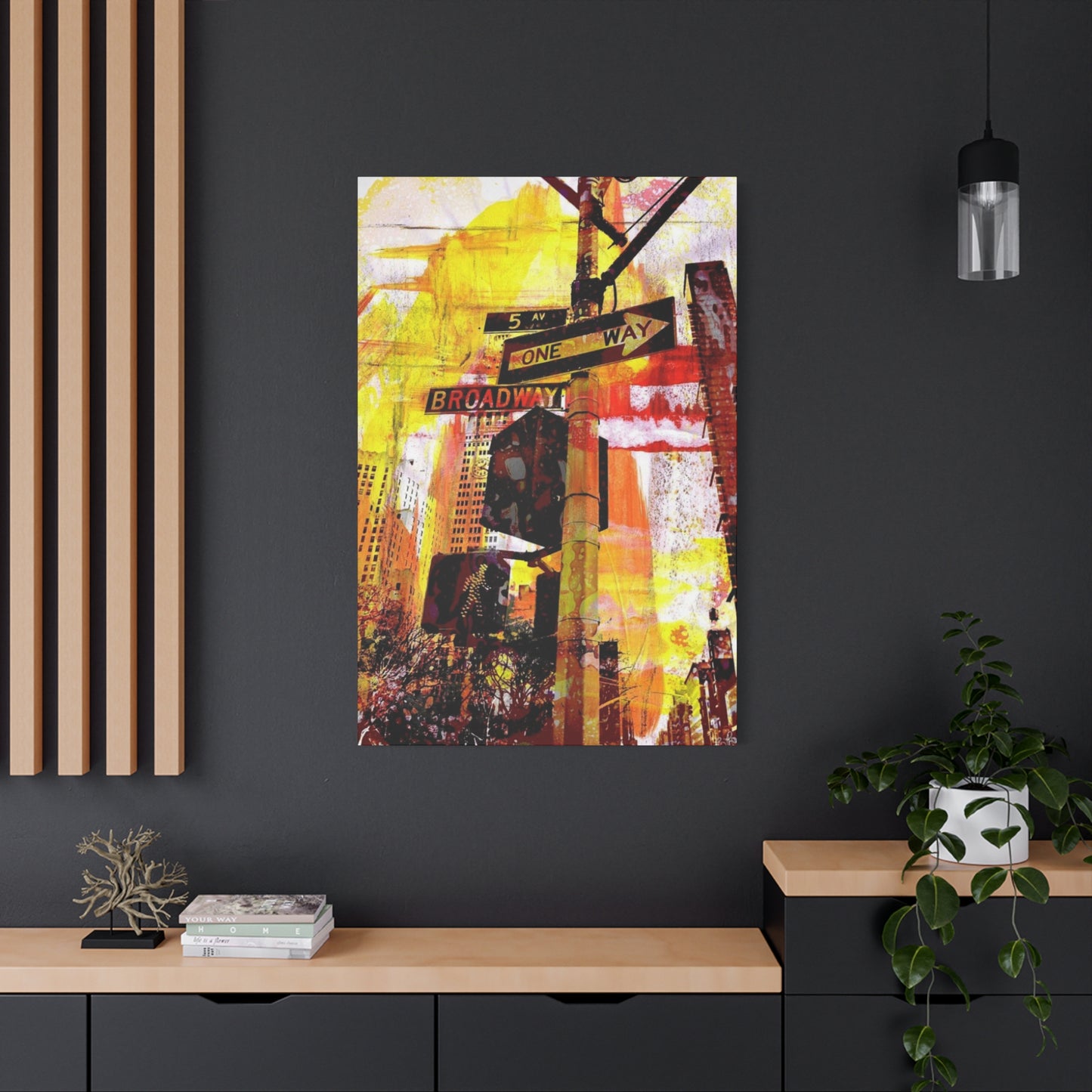Exploring the Layers: Techniques Behind Sign Way Painting Mixed Media Wall Art
The world of artistic creation has evolved dramatically over the years, bringing forth innovative approaches that combine various materials and techniques into cohesive visual statements. Artists today have access to an unprecedented array of materials, tools, and surfaces that allow them to push creative boundaries and develop distinctive styles that reflect their unique artistic voices. This comprehensive exploration delves into the fascinating realm where traditional painting methods meet contemporary mixed media approaches, specifically focusing on how artists can effectively sign their work while creating stunning wall art pieces on canvas that captivate viewers and transform living spaces.
Creating artwork that stands out in today's competitive art market requires more than just technical skill. It demands a deep understanding of how different materials interact, how to layer various mediums effectively, and how to incorporate personal signature elements that authenticate and personalize each piece. Whether you are an emerging artist seeking to establish your creative identity or an experienced practitioner looking to expand your technical repertoire, understanding these principles can elevate your artistic practice to new heights.
The integration of signature techniques within mixed media compositions presents unique challenges and opportunities for artists. Unlike traditional single-medium works where signing is straightforward, mixed media pieces often require careful consideration of placement, materials, and timing to ensure the signature complements rather than detracts from the overall composition. This becomes even more critical when creating work intended for canvas prints and wall art applications, where the final presentation must maintain professional standards while preserving the artist's personal touch.
Historical Development of Signature Techniques in Art
Throughout art history, the way artists sign their work has evolved alongside artistic movements and cultural shifts. Ancient artists often incorporated their marks into the composition itself, embedding their identities within the narrative or decorative elements of their work. Medieval manuscript illuminators developed elaborate signature styles that became part of the artistic tradition, while Renaissance masters refined the practice of signing paintings in ways that balanced visibility with aesthetic harmony.
The significance of an artist's signature transcended mere identification during the Baroque period, becoming a statement of authorship and artistic pride. Masters like Rembrandt and Vermeer developed distinctive signature styles that collectors came to recognize and value. This trend continued through the Romantic era, where signatures became increasingly prominent as the concept of individual artistic genius gained cultural importance.
Modern and contemporary artists have taken signature practices in diverse directions, with some embracing bold, visible marks while others prefer subtle or even hidden signatures. The Pop Art movement saw artists like Andy Warhol incorporating their signatures as graphic elements, while Abstract Expressionists sometimes integrated their marks into the gestural language of their paintings. This historical progression demonstrates how signature practices reflect broader artistic and cultural values while serving the practical purpose of authentication.
Materials and Tools for Mixed Media Creation
Working with mixed media requires assembling a diverse toolkit that spans multiple artistic disciplines. The foundation typically begins with quality canvas surfaces, which can range from traditional stretched cotton to more experimental options like linen, polyester blends, or canvas boards. Each surface type offers distinct advantages for different mixed media approaches, with stretched canvas providing flexibility and bounce that some artists prefer, while rigid supports offer stability for heavily layered work.
Paint materials in mixed media practice often include acrylics as a versatile base layer due to their quick drying time and compatibility with other mediums. Oil paints can be incorporated in later stages for their rich colors and blending capabilities, while watercolors and inks add translucent effects that create depth and interest. Gouache provides opaque coverage with a matte finish that contrasts beautifully with glossier elements, and spray paints offer opportunities for creating atmospheric effects and bold graphic statements.
Beyond traditional painting materials, mixed media artists employ an extensive range of collage elements including paper ephemera, photographs, fabric scraps, and found objects. Adhesives vary from traditional PVA glue to specialized mediums like gel medium, which can serve both as an adhesive and as a transparent layer that unifies disparate elements. Texture-creating materials such as modeling paste, pumice gel, and fiber paste allow artists to build dimensional surfaces that add tactile interest to their work.
Drawing materials play a crucial role in mixed media compositions, with graphite pencils, charcoal, pastels, and conte crayons each offering unique mark-making possibilities. Oil pastels and wax crayons create resist effects when combined with water-based media, while colored pencils allow for precise detailing over painted surfaces. Contemporary mixed media artists also incorporate digital elements, printing images or textures that are then integrated into physical works through various application methods.
Fundamental Techniques for Layering Materials
Successful mixed media artwork relies heavily on understanding proper layering sequences to ensure longevity and prevent technical failures. The cardinal rule involves applying water-based materials before oil-based ones, as the principle of fat over lean remains crucial even in experimental mixed media contexts. Beginning with thin, diluted layers allows for quick development of compositional structure while maintaining flexibility for subsequent modifications and additions.
Transparent layering techniques create luminous effects by allowing underlying colors and textures to show through successive applications. This approach requires patience, as each layer must dry sufficiently before adding the next to prevent muddying or unintended blending. Artists can build complex color relationships through this method, creating depth that would be impossible to achieve through direct mixing alone. The key lies in maintaining a light touch and avoiding the temptation to add too much material too quickly.
Opaque layering provides contrast and focus within mixed media compositions, allowing artists to establish clear focal points and visual hierarchies. By alternating between transparent and opaque layers, creators develop rich surfaces that reward close viewing while maintaining overall compositional clarity. This technique proves particularly effective when combined with selective scraping or sgraffito methods, where upper layers are partially removed to reveal underlayers in controlled ways.
Collage integration requires specific considerations regarding adhesion strength and long-term stability. Paper elements need proper sealing to prevent deterioration, while three-dimensional objects must be securely attached to prevent separation over time. Many artists apply isolation coats between layers to protect underlying work and create distinct visual planes within their compositions. This also allows for easier removal or modification of upper layers if needed during the creative process.
Canvas Preparation Methods for Mixed Media Work
Proper canvas preparation forms the foundation for successful mixed media artwork that maintains its integrity over time. Traditional gesso application creates a bright white, slightly absorbent surface that accepts most media well, though many artists prefer tinted grounds that establish an overall color harmony from the start. Applying multiple thin gesso coats rather than one thick layer produces a smoother, more professional surface that resists cracking and delamination.
Some mixed media approaches benefit from leaving portions of the canvas unprimed or partially primed to create varied absorption rates across the surface. This technique allows for interesting effects where paint behaves differently in various areas, soaking into raw canvas in some spots while sitting atop primed sections in others. However, artists must consider longevity implications, as unprimed canvas may deteriorate more quickly, especially when exposed to acidic materials or environmental factors.
Texture building on canvas surfaces can begin during the preparation stage through applications of modeling paste, texture gels, or even household materials like joint compound. Creating physical texture at this early stage allows subsequent paint layers to catch and pool in recesses, generating organic color variations that add visual interest. Artists can use various tools to create patterns in wet texture materials, from traditional palette knives to unconventional implements like credit cards, combs, or natural objects.
Alternative preparation methods include coating canvas with absorbent grounds specifically designed for water media, creating surfaces that perform more like watercolor paper while maintaining canvas flexibility. Conversely, applying multiple layers of polymer medium can create a nearly non-absorbent surface perfect for techniques involving material removal or extended working time. The preparation choices artists make during this crucial stage profoundly impact all subsequent decisions and possibilities within their mixed media practice.
Compositional Strategies for Wall Art Canvas Pieces
Designing effective wall art requires consideration of viewing distance and environmental context alongside traditional compositional principles. Large-scale canvas works demand bold compositional moves with clear focal points visible from across a room, while smaller pieces can incorporate intricate details that reward close examination. Artists must balance these concerns with their personal artistic vision to create work that functions successfully in its intended display context.
The rule of thirds remains a valuable compositional tool even in abstract or non-representational mixed media work. Dividing the canvas into thirds both horizontally and vertically creates natural focal points at the intersections, locations where the human eye naturally gravitates. Placing important elements at or near these intersections often results in more dynamic, engaging compositions than centering key features or distributing them evenly across the surface.
Directional flow guides viewer attention through the composition, creating visual paths that can be controlled through line, color, value, and texture. In mixed media work, materials themselves can create directional movement, with collage elements, drawn lines, or dimensional additions leading the eye on a journey across the surface. Circular compositions create contained, meditative experiences, while diagonal arrangements generate energy and dynamism appropriate for more active, expressive work.
Balance considerations in mixed media extend beyond simple symmetry or asymmetry to include balancing different material weights and visual densities. Heavy, textured areas require counterbalancing with either similar weight elsewhere or with strong color or value contrasts. The goal involves creating compositions that feel complete and resolved while maintaining enough visual interest to sustain repeated viewing over time.
Working with Acrylic Paints in Mixed Media
Acrylic paints serve as the workhorse medium for much mixed media canvas work due to their versatility, quick drying time, and compatibility with numerous other materials. Their water-based nature allows for easy cleanup and makes them more user-friendly than oils, while their plastic binder creates durable paint films that flex with canvas movement without cracking. These characteristics make acrylics ideal for base layers and intermediate stages in complex mixed media compositions.
Extending acrylic paint with various mediums dramatically expands creative possibilities. Gloss medium increases flow and transparency while enhancing color intensity, perfect for glazing techniques. Matte medium reduces sheen while maintaining transparency, useful for creating subtle layers that don't compete with glossier elements. Gel mediums add body and can create impasto effects similar to oil painting, while retarder extends working time for blending and gradual transitions between colors.
Acrylic paint can be diluted with water for watercolor-like effects, though excessive dilution risks binder breakdown and poor adhesion. For very thin applications, adding flow improver or transparent medium maintains paint integrity while achieving desired fluidity. This allows artists to create everything from opaque coverage to delicate washes on a single canvas, using a single paint type in dramatically different ways throughout the composition.
Combining acrylics with other media requires understanding compatibility issues and proper sequencing. Acrylics generally accept most materials over them once dry, including oils, pastels, and collage elements. However, attempting to apply acrylics over oil paint results in poor adhesion and eventual delamination. This fundamental incompatibility necessitates careful planning in mixed media work to ensure technical soundness alongside aesthetic success.
Oil Paint Integration Techniques
Oil paints bring unmatched richness and blending capabilities to mixed media canvas work when incorporated thoughtfully. Their slow drying time allows extended manipulation, enabling subtle color transitions and detailed work impossible with faster-drying media. The luminous quality of oil paint, resulting from light penetrating the paint layer and reflecting off the white ground, creates depth particularly effective for certain subject matter and aesthetic approaches.
Successful oil paint integration in mixed media requires proper surface preparation, typically involving complete sealing of water-based underlayers with acrylic polymer medium or similar barriers. This prevents oil from penetrating to lower levels where it could cause adhesion problems or discoloration. Some artists prefer allowing acrylic underlayers to cure for several days before adding oil, ensuring complete polymerization and maximum stability.
Limited oil paint application in mixed media contexts often proves most effective, using oil selectively for specific passages that benefit from its unique properties rather than covering the entire surface. Final glazes in oil can unify a complex mixed media composition, while strategic opaque passages in oil create focal points with unmatched luminosity. This selective approach honors oil paint's special qualities while respecting the practical challenges it introduces in mixed media work.
Proper drying time becomes critical when using oils in mixed media, as insufficient drying before applying isolation coats or varnishes can result in yellowing, cracking, or other deterioration. Most conservators recommend waiting at least six months before varnishing oil paintings, and similar caution applies to mixed media works incorporating oil paint. This extended timeline requires patience but ensures the longevity and stability of finished pieces.
Watercolor and Ink Applications
Watercolor brings translucent beauty and spontaneous effects to mixed media canvas work, though applying it over acrylic-primed canvas requires adjusting traditional watercolor techniques. The relatively non-absorbent surface of acrylic gesso causes water and pigment to sit on top rather than soaking in, allowing extended working time but potentially resulting in different effects than on traditional watercolor paper. Some artists appreciate this difference, while others prepare canvas with absorbent grounds specifically formulated for water media.
Ink application in mixed media offers precision and permanence unavailable with other materials. Drawing inks create crisp lines and detailed work that maintains clarity even when surrounded by painterly passages. Calligraphic elements can introduce textual content or purely gestural marks that add energy and contrast to softer painted areas. However, artists must ensure ink compatibility with subsequent layers, testing to confirm that overlaying materials won't cause bleeding or other undesirable reactions.
Alcohol inks create vibrant, unpredictable effects on non-porous surfaces, flowing and blending in organic patterns that suggest natural phenomena. These highly concentrated dyes produce intense colors that can dominate compositions if not balanced carefully with other elements. Their transparency makes them excellent for glazing over textured surfaces, where they pool in recesses while remaining lighter on raised areas, accentuating dimensional qualities within the work.
Watersoluble graphite and watercolor pencils bridge drawing and painting, allowing detailed mark-making that can be subsequently activated with water for painterly effects. This versatility makes them valuable in mixed media practice, useful for initial compositional sketching, adding detail to painted passages, or creating finishing touches. The ability to use them both dry and wet provides flexibility throughout the creative process.
Pastels and Drawing Materials in Mixed Media
Soft pastels contribute vibrant color and velvety texture to mixed media canvas pieces, working particularly well over textured surfaces where their dry pigment catches on raised areas. Their opacity allows for dramatic color shifts and highlights over darker underlayers, while their blendability creates smooth transitions between hues. However, pastel's lack of binder means it requires fixative application to prevent smudging and ensure permanence within mixed media compositions.
Oil pastels offer greater adhesion than soft pastels, bonding more permanently to canvas surfaces without requiring fixative. Their waxy, creamy consistency allows for bold mark-making and intense color application, while their resistance to water-based media creates interesting effects when combined with acrylic washes or watercolor. Scratching through oil pastel layers reveals colors beneath, adding another texture and mark-making possibility to the mixed media toolkit.
Charcoal brings tonal depth and gestural energy to mixed media work, creating bold marks that read clearly even in complex compositions. Compressed charcoal produces intense blacks useful for establishing value structure and creating dramatic contrasts, while vine charcoal's softer quality allows for subtle modeling and atmospheric effects. Like soft pastel, charcoal requires fixing to prevent smudging, though some artists intentionally leave it unfixed under isolation coats for a distinctive quality.
Colored pencils provide precise control for detailed work and fine corrections in mixed media pieces. Their transparency allows for subtle color adjustments and gradual value transitions over painted surfaces. Wax-based colored pencils can resist subsequent water-based applications, creating interesting texture effects, while watercolor pencils offer the option of activating marks with water for softer, more painterly passages when desired.
Printing and Transfer Techniques
Image transfer methods allow artists to incorporate photographic or printed imagery into mixed media canvas work in ways that feel more integrated than simple collage. Gel medium transfers lift printed images from paper backing, creating translucent elements that blend seamlessly with painted passages. This technique requires specific paper types and careful execution but produces distinctive results with a weathered, vintage quality that many artists find appealing.
Direct printing on canvas using inkjet technology has expanded possibilities for mixed media artists who work with digital imagery or want to incorporate photographic elements. Specially prepared canvas accepts printer ink, allowing artists to print entire compositions or selected elements that are then enhanced with paint, collage, and other mixed media techniques. This hybrid approach bridges digital and analog processes, creating work that combines the precision of digital imagery with the tactile qualities of hands-on manipulation.
Screening processes, from traditional silkscreen to contemporary stenciling techniques, introduce graphic elements and repeated patterns into mixed media compositions. These methods create clean-edged shapes and consistent marks that contrast effectively with more gestural, painterly passages. Layering multiple screen applications with varied colors and registration introduces depth and visual complexity, particularly effective in work with strong graphic or decorative elements.
Monoprinting offers a middle ground between printmaking and painting, allowing artists to create unique impressions that incorporate drawing, painting, and printmaking sensibilities. Pulling prints from painted or inked surfaces transfers imagery to canvas that maintains spontaneous, organic qualities while introducing the distinctive character of printed marks. These impressions can serve as starting points for further development or as finished elements within larger mixed media compositions.
Digital Integration in Contemporary Mixed Media
Digital technology has transformed contemporary mixed media practice, with many artists incorporating digitally created or manipulated elements into physical works. Photography, digital painting, and graphic design software allow for precise control and unlimited experimentation before committing to physical materials. These digital elements can be printed onto canvas or paper for integration into mixed media pieces, bridging virtual and tactile creative realms.
Hybrid workflows combine digital and analog processes throughout the creative journey rather than simply adding digital prints to otherwise traditional work. Artists might begin with physical painting, photograph or scan the work, manipulate it digitally, print the results, and then continue with additional physical media applications. This back-and-forth process can continue through multiple iterations, creating complex pieces that fully exploit both digital and physical media capabilities.
Color management becomes crucial when working across digital and physical realms, as monitor displays and printed results often differ significantly. Calibrating equipment and understanding color space relationships helps minimize unwanted surprises when digital files become physical prints. Test printing on actual canvas with the intended printing method provides the most reliable preview of how digital elements will appear in the finished mixed media piece.
Documentation of mixed media work benefits from digital technology, with high-quality photography preserving images of pieces before they're sold or potentially changed through aging or environmental factors. These digital records serve archival purposes while also functioning as portfolio materials and references for future work. Some artists create entirely digital versions of their mixed media pieces, exploring variations and possibilities without consuming physical materials.
Edge Treatment for Canvas Wall Art
Canvas edges require intentional treatment when pieces are destined for display without frames, as side surfaces become visible and impact overall presentation. Continuing the painting composition around all edges creates a finished look appropriate for contemporary gallery presentations, though this approach requires additional time and material. Planning compositions to accommodate this edge continuation from the beginning produces more cohesive results than attempting to extend completed front-face images afterward.
Painting edges in neutral colors provides a clean, professional appearance without the complexity of wrapping compositions continuously. Black edges offer sophistication and help focus attention on the front face, while white edges create a brighter, more open feeling. Matching edge colors to dominant hues in the front composition creates color harmony, though artists must avoid creating visual confusion that detracts from the primary viewing surface.
Leaving canvas edges raw or minimally finished appeals to some artists and viewers, celebrating the materiality of the canvas support and suggesting work-in-progress or studio authenticity. This approach works best with high-quality canvas that presents well in its natural state, as lower-quality materials may appear merely unfinished rather than intentionally raw. Even raw edge presentations benefit from at least protecting edges with clear medium or varnish to prevent fraying and soiling.
Decorative edge treatments transform sides into artistic opportunities, with pattern, text, or continued imagery adding unexpected interest visible when viewing work from angles. Some artists sign edges rather than fronts, making signatures prominent features when work hangs on walls. Three-dimensional elements can extend onto or attach to edges, increasing the work's physical presence and challenging traditional definitions of flat wall art.
Creating Series and Connected Bodies of Work
Working in series offers numerous advantages for artists developing their mixed media practice. Series allow for deep exploration of particular ideas, techniques, or subjects without the pressure of completely resolving everything in a single work. Ideas can develop across multiple pieces, with each building on insights gained from previous explorations. This approach often leads to more sophisticated results than isolated pieces created without connection to broader artistic concerns.
Series planning involves establishing parameters that define what unites the works while allowing sufficient variation to maintain interest across the group. These parameters might include size constraints, limited color palettes, specific material combinations, or thematic focuses. Clear parameters prevent series from devolving into random collections while flexible interpretation of these constraints prevents formulaic repetition.
Visual cohesion across series can be achieved through recurring motifs, consistent compositional structures, or signature material combinations that create family resemblances among pieces. However, cohesion must be balanced with sufficient variety to justify creating multiple works rather than a single comprehensive piece. Each series component should offer something unique while clearly belonging to the larger group.
Documentation and presentation of series work requires consideration of how pieces relate spatially when displayed together. Some series are designed for specific arrangements, with pieces hung in particular sequences or configurations that affect meaning and visual impact. Other series consist of individual works that function independently while gaining additional resonance when shown together, offering flexibility in display options.
Pricing Strategies for Mixed Media Canvas Art
Establishing appropriate pricing for mixed media canvas work requires balancing multiple factors including material costs, time investment, artistic experience, and market positioning. Many emerging artists underprice their work, failing to account adequately for the time spent creating pieces or the years invested developing skills that make the work possible. Conversely, pricing too high relative to market position and collector awareness can result in work remaining unsold, creating discouragement and financial difficulties.
Material cost calculation should include not just obvious supplies like canvas and paint but also specialized mixed media materials, adhesives, protective coatings, and even proportional costs of tools and equipment used across multiple pieces. Adding a markup to raw material costs ensures coverage while acknowledging that premium materials often contribute to work quality and perceived value. However, material costs typically represent only a small percentage of final pricing for professional artists, with labor, overhead, and artistic value comprising larger portions.
Time tracking helps artists understand actual investment in each piece, from initial conception through final varnishing and signing. Multiplying hours by a fair hourly rate provides a baseline for pricing, though this approach requires establishing hourly rates that reflect both artistic skill and market realities. Some artists find hourly calculations useful primarily for understanding whether pricing adequately compensates their time rather than as the sole pricing determinant.
Market research involves examining prices for similar work by artists at comparable career stages working in similar styles and markets. Local, regional, and national differences significantly affect pricing possibilities, as do venue types ranging from informal sales to high-end galleries. Gradually raising prices as demand increases and artistic reputation grows reflects market dynamics while avoiding the credibility problems that can arise from dramatic price jumps or inconsistent pricing across venues.
Marketing and Promotion for Mixed Media Artists
Effective marketing begins with professional presentation of finished work through high-quality photography that accurately represents colors, textures, and scale. Poor documentation undermines even exceptional artwork, as most initial contact with potential collectors happens through images rather than direct viewing. Investing in proper photography equipment or professional photography services pays dividends through enhanced presentation across all marketing channels from websites to social media to portfolio presentations.
Online presence has become essential for contemporary artists, with websites serving as professional portfolios accessible to anyone interested in the work. Website content should include clear, well-organized galleries of current and past work, artist statements explaining creative philosophy and approaches, and straightforward contact information for inquiries. Regular updates keep content fresh and give visitors reasons to return, while search engine optimization helps potential collectors discover the work through online searches.
Social media platforms offer direct connection with audiences and opportunities to share process, inspiration, and finished work in less formal contexts than traditional marketing channels. Different platforms attract different audiences and favor different content types, so strategic platform selection and content tailoring maximize effectiveness. Consistency in posting maintains visibility and engagement, though quality content matters more than posting frequency, with thoughtful occasional posts outperforming frequent low-quality updates.
Email marketing allows direct communication with interested parties, sharing news about new work, exhibitions, and other relevant information. Building email lists through website sign-ups and exhibition contacts creates valuable assets for long-term marketing efforts. Newsletters should provide value beyond simple sales pitches, offering insights into artistic process, inspiration, or other content that subscribers find genuinely interesting rather than purely promotional material.
Exhibition Opportunities and Gallery Relationships
Seeking exhibition opportunities requires identifying venues appropriate for the work and current career stage. Emerging artists often begin with group shows at local venues, community art centers, and alternative spaces before approaching commercial galleries. Each exhibition provides experience, exposure, and potential sales while building exhibition history that supports future applications. Carefully reading and following submission guidelines demonstrates professionalism that helps applications stand out among numerous competitors.
Gallery relationships require clear communication and mutual respect, with successful partnerships benefiting both artists and galleries. Understanding gallery operations, including commission structures and expectations regarding exclusive representation, prevents misunderstandings that can damage relationships. Professional behavior including reliable delivery of work, appropriate pricing, and participation in promotional efforts helps establish reputation as a desirable artist with whom galleries want to work.
Exhibition preparation involves more than creating work, extending to professional framing or finishing, accurate documentation, clear pricing information, and promotional materials supporting the exhibition. Artists should plan installation in advance, considering how pieces relate spatially and conceptually when displayed together. Attending openings and being available to discuss work with viewers demonstrates commitment and provides opportunities for direct connection with potential collectors and art enthusiasts.
Alternative exhibition venues including restaurants, offices, libraries, and other public spaces offer opportunities outside traditional gallery systems. While these venues may lack the prestige of established galleries, they provide visibility and sales possibilities particularly valuable for artists building careers. Professional presentation remains crucial regardless of venue, with proper hanging, lighting, and signage creating positive impressions that transcend location.
Building Collector Relationships and Repeat Sales
Cultivating collector relationships transforms one-time buyers into ongoing supporters who follow artistic development and make repeated purchases over years. Personal connection enhances collectors' experience of owning artwork, making them feel invested in artistic success beyond simple transaction relationships. Thank-you notes, studio visit invitations, and updates about new work maintain connections without being pushy or excessive.
Understanding collector motivations helps artists communicate effectively about their work. Some collectors respond primarily to aesthetic qualities, loving how pieces look in their spaces and complement their decor. Others connect with conceptual aspects, appreciating the ideas and meanings embedded in work. Still others view art collecting as investment, considering potential appreciation alongside aesthetic pleasure. Recognizing different motivations allows for tailored communication that resonates with each collector's particular interests.
Offering first viewing opportunities to established collectors demonstrates appreciation for their support while providing practical advantages. These preferred customers often purchase new work quickly, providing income and reducing marketing effort required for sales. Some artists maintain email lists specifically for announcing new work to past collectors before publicizing availability more widely, creating special status that collectors value.
Commission work presents opportunities for deeper collector relationships while creating pieces specifically suited to collectors' spaces and preferences. Successfully executed commissions require clear communication about expectations, budget, timeline, and creative control. Many artists accept commissions within their established style while declining requests for work too far outside their artistic vision, maintaining artistic integrity while accommodating client desires where possible.
Studio Practice and Workflow Organization
Efficient studio organization maximizes creative time while minimizing frustration from misplaced supplies or disorganized workspaces. Designating specific storage locations for different material categories helps maintain order, with frequently used items kept readily accessible while occasional supplies are stored more remotely. Clear labeling prevents confusion and speeds locating needed materials, particularly important for large collections of similar items like paint tubes or collage papers.
Workflow optimization involves arranging studio spaces to support natural creative processes. Considering movement patterns between different work zones, positioning frequently used supplies within easy reach, and ensuring adequate work surface and storage all contribute to efficient, enjoyable studio practice. Lighting deserves particular attention, with natural light preferred for color accuracy supplemented by quality artificial lighting for evening work or spaces lacking good natural illumination.
Safety considerations include proper ventilation when working with materials producing fumes, using appropriate personal protective equipment including respirators for certain processes, and maintaining clean workspaces that minimize fire hazards and health risks. Understanding proper disposal methods for various art materials protects both personal health and environmental wellbeing, with many communities offering hazardous waste collection specifically for materials like solvents and certain paints.
Time management strategies help artists balance creative work with necessary business tasks including marketing, documentation, exhibition preparation, and communication with collectors and galleries. Designating specific times for different activity types prevents business tasks from completely overwhelming creative time while ensuring these essential activities receive adequate attention. Some artists dedicate particular days to specific tasks, creating rhythms that support both creative and practical aspects of artistic careers.
Documentation and Record Keeping Practices
Thorough documentation of artwork serves multiple important purposes from tracking artistic development to providing records for tax purposes and insurance coverage. Photographing all completed work before leaving the studio ensures documentation even if pieces sell quickly or are damaged after leaving artist control. Including measurements, materials lists, completion dates, and sale prices in records creates comprehensive archives supporting future reference and business operations.
Inventory management systems range from simple spreadsheets to specialized software designed for artist record keeping. Effective systems track current location of all pieces including those in storage, on consignment at galleries, loaned for exhibitions, or in private collections. This information proves invaluable for insurance purposes, exhibition planning, and responding to collector or gallery inquiries about work availability.
Financial record keeping supports tax preparation while helping artists understand business economics and profitability. Tracking all income including sales, commissions, licensing, and teaching alongside expenses like materials, studio rent, marketing costs, and professional development provides clear pictures of financial realities. Many artists benefit from professional accountant or bookkeeper services, particularly once their practice generates substantial income or becomes legally complex.
Process documentation through photographs, videos, or written notes captures creative development and provides content for social media, websites, and collector engagement. Sharing process images helps viewers understand the work involved in creating mixed media pieces while demystifying artistic practice. Some artists maintain blogs or vlogs documenting studio work, building audiences interested in their creative journey alongside finished work.
Framing Considerations for Mixed Media Canvas
Framing choices significantly impact how mixed media canvas work appears and is received by viewers. Traditional framing with wooden frames and glazing provides maximum protection while creating formal presentation appropriate for certain contexts. However, many contemporary mixed media artists prefer frameless presentation that celebrates the dimensional qualities and edge treatments integral to their work. This choice reflects broader trends toward casual, accessible art presentation.
Float mounting techniques suspend canvas away from backing materials, creating shadows that emphasize the artwork's dimensional nature. This presentation style works particularly well for pieces with interesting edge treatments or three-dimensional elements extending beyond the front face. Hardware must adequately support the artwork's weight while remaining invisible or minimally visible from normal viewing positions.
Custom framing allows for personalization matching frame style to artwork character, from rustic wood frames for organic, nature-inspired work to sleek metal frames for geometric, contemporary pieces. Working with professional framers ensures structural soundness and archival quality materials protecting artwork long-term. However, custom framing costs can equal or exceed artwork creation costs, affecting pricing strategies and profit margins significantly.
Gallery wrapping, where canvas continues around stretcher bar sides and is stapled to the back, creates finished edges suitable for frameless display. This technique requires either painting edges or continuing compositions around sides as discussed previously. Standard gallery wrap depths range from three-quarters of an inch to several inches deep, with deeper stretchers creating more dramatic shadows and contemporary appearance when hung on walls.
Creating Cohesive Color Palettes Across Bodies of Work
Developing signature color palettes helps unify bodies of work while supporting recognition of individual artistic voices. These palettes need not be restrictive, but rather provide frameworks within which artists work, establishing color relationships that appear consistently across multiple pieces. Analyzing admired artwork to understand how color operates within it provides starting points for developing personal palette preferences.
Seasonal color influences offer natural frameworks for palette development, with spring palettes emphasizing fresh greens and pastels, summer palettes featuring intense saturated colors, autumn palettes showcasing warm earth tones, and winter palettes exploring cool blues and neutrals. These associations carry emotional content that can enhance artwork meaning while providing accessible frameworks for color decision-making.
Cultural color associations vary globally, with specific hues carrying different meanings in different cultures. Artists working internationally or for diverse audiences should consider these associations, though personal color preferences and artistic vision ultimately should guide palette choices. Understanding cultural color meanings prevents unintended communication while informing intentional color symbolism within artwork.
Emotional color responses provide another framework for palette development, with warm colors generally energizing while cool colors calm. However, context and specific hue choices significantly affect these generalizations, and individual viewers respond differently based on personal associations and preferences. Artists should develop sensitivity to color's emotional potential while recognizing that no color combination produces identical responses across all viewers.
Abstract Approaches in Mixed Media Canvas Work
Abstract mixed media practices liberate artists from representational constraints, focusing attention on formal elements including color, texture, composition, and material relationships. This freedom allows for intuitive, process-driven approaches where work evolves through action and response rather than predetermined planning. Many artists find abstract work more personally expressive than representational approaches, as abstraction requires viewers to bring their own interpretations and emotional responses.
Starting abstract work often involves establishing initial marks, colors, or textures without specific end results in mind. These beginnings provide something to respond to, with subsequent additions developing through intuitive reactions to what exists. This approach requires trusting creative instincts while remaining open to unexpected directions that emerge through the working process. Knowing when to stop proves challenging, as abstract work lacks the built-in completion signals that representational work provides.
Compositional principles apply to abstract work as much as representational pieces, with balance, focal point development, and directional flow remaining important considerations. However, abstract work often explores these principles in less conventional ways, sometimes intentionally violating traditional compositional rules to create tension or surprise. Understanding rules allows for informed rule-breaking that achieves specific effects rather than accidental compositional weakness.
Meaning in abstract work operates differently than in representational art, with viewers bringing personal associations and interpretations rather than decoding obvious symbolic content. Some abstract artists embed personal symbolism or references within formally abstract compositions, creating layered meaning for those aware of these connections while allowing purely formal readings for other viewers. This multiplicity of possible interpretations enriches abstract work's potential resonance with diverse audiences.
Representational Mixed Media Techniques
Representational mixed media combines recognizable imagery with varied materials and techniques, creating work that depicts subjects while celebrating material diversity and surface richness. This approach allows for personal interpretation of subjects through material choices and technical handling while maintaining connection to observable reality. Many contemporary artists work in zones between pure representation and pure abstraction, suggesting forms without complete description.
Reference materials including photographs, sketches, and direct observation provide information for representational work while allowing interpretive freedom in translation to mixed media. Direct copying of photographic sources often produces stiff, lifeless results, while using references as starting points for creative interpretation yields more vital, personally expressive work. Multiple reference sources combined with imagination generally produce more interesting results than slavish copying of single sources.
Selective realism focuses detailed representational treatment on specific areas while handling others loosely or abstractly. This approach directs viewer attention to areas receiving careful attention while preventing overall tightness that can make work feel overworked or lacking spontaneity. Combining representational and abstract passages within single pieces creates visual interest through contrasts while showcasing diverse technical skills.
Stylization interprets representational subjects through personal artistic filters, simplifying, exaggerating, or otherwise modifying observed reality. This personalizes depiction while potentially communicating emotional content or conceptual concerns beyond pure description. Stylization ranges from subtle departures from strict accuracy to extreme interpretation where recognizability nearly disappears, with effective degree depending on artistic intent and content requirements.
Narrative Content in Mixed Media Wall Art
Storytelling through visual artwork creates engagement beyond purely aesthetic response, inviting viewers to interpret narrative content within compositions. Mixed media particularly suits narrative approaches through its ability to incorporate text, symbolic objects, sequential imagery, and varied materials that enrich storytelling possibilities. Narrative can be linear and clear or ambiguous and open to interpretation, depending on artistic intent.
Sequential imagery borrows from comic and graphic novel traditions, presenting multiple moments or viewpoints within single compositions or across series of related pieces. This approach allows for complex storytelling impossible in single-moment depictions, though it requires careful compositional organization to guide viewers through intended reading sequences. Mixed media materials can differentiate temporal or spatial zones within narrative compositions.
Symbolic objects and imagery communicate narrative content through association and metaphor, with objects suggesting stories beyond literal depiction. Cultural symbols carry shared meanings, while personal symbols create private languages that may or may not be accessible to viewers without additional information. Balancing accessible and obscure symbolism allows work to operate on multiple levels for different audiences.
Text integration brings explicit narrative content into visual work, from single words suggesting concepts to longer passages providing specific information. Hand-lettering integrates text as visual element with personal character, while printed or transferred text offers different aesthetic qualities and associations. Text placement and relationship to visual elements significantly affects how viewers process and integrate verbal and visual information.
Seasonal and Thematic Series Development
Creating seasonal series allows artists to explore how specific times of year influence color, mood, and subject matter across multiple works. Spring series might emphasize renewal through fresh greens and blooming flower imagery, while winter series could explore dormancy through muted palettes and bare landscape references. These natural frameworks provide structure for extended explorations while remaining accessible to viewers through shared seasonal experiences.
Thematic series organized around concepts like memory, identity, place, or other concerns allow for deep investigation of subjects meaningful to individual artists. Multiple pieces exploring single themes from different angles often reveal insights impossible in single works, while series format prevents pressure to completely resolve complex ideas in individual pieces. Viewers appreciate thematic coherence across series, finding satisfaction in recognizing recurring concerns and watching ideas develop.
Color-based series explore relationships within specific color families or schemes across multiple works. Limiting each piece to analogous colors, complementary pairs, or monochromatic palettes creates unifying frameworks while requiring creative variation to prevent repetition. These constraints often stimulate creativity through limitation, forcing artists to find solutions within narrower parameters than completely open approaches allow.
Material-based series focus on specific mixed media combinations or techniques explored across multiple pieces. Dedicating a series to specific collage materials, texture applications, or technical approaches allows for mastering these methods while creating visually unified bodies of work. This focused practice often leads to technical breakthroughs and signature approaches that distinguish individual artistic voices.
Art Fair and Market Participation
Art fairs provide opportunities for direct sales, networking with collectors and other artists, and increasing visibility within art markets. Successful fair participation requires significant investment in booth fees, travel, lodging, and materials, so careful selection of appropriate fairs matching artistic level and market positioning prevents wasted resources. Researching fair reputations, typical sales levels, and visitor demographics helps identify promising opportunities.
Booth design significantly impacts fair success, with professional presentation attracting visitors while amateur or cluttered displays discourage attention. Clear organization, adequate lighting, and strategic artwork selection create inviting environments where visitors feel comfortable browsing. Many artists find success with varied price points from affordable small works to investment-quality larger pieces, allowing collectors with different budgets to purchase.
Engaging with visitors requires balancing approachability with respecting their space, being available for questions without hovering or pressuring. Confident, articulate discussion of work without pretension or excessive artspeak helps potential collectors understand and connect with artwork. Having clear pricing information visible prevents awkwardness, though some artists prefer listing prices separately to avoid prominent display that can overshadow artwork.
Follow-up after fairs involves contacting interested parties who provided contact information, updating mailing lists, and analyzing fair success to inform future participation decisions. Some shows generate immediate sales while others build relationships resulting in later purchases, so evaluation should consider both immediate and longer-term results. Learning from each fair experience improves subsequent participation strategies.
Online Sales Strategies and Platforms
Online art sales have grown dramatically, with numerous platforms allowing artists to reach global audiences without geographic limitations. Platform selection requires considering commission structures, audience demographics, platform features, and terms of service including exclusive representation requirements or restrictions on pricing. Many artists use multiple platforms, balancing broad exposure against complexity of managing inventory and orders across systems.
Creating effective online listings requires high-quality images showing overall work and details, accurate descriptions including dimensions and materials, clear pricing and shipping information, and engaging titles that attract attention while accurately representing pieces. SEO considerations including keyword use help potential buyers discover work through searches, though keyword stuffing or misleading tags damage credibility and may violate platform policies.
Shipping logistics present challenges for canvas artwork, requiring proper packaging protecting work during transit without excessive weight or expense. Removed canvas from stretchers rolls into tubes for economical shipping of larger works, though this requires collectors to either restretch or have stretching done locally. Gallery-wrapped canvas ships flat, requiring substantial packaging and higher shipping costs but arriving ready for display without additional collector investment.
Conclusion
Exploring the Layers: Techniques Behind Sign Way Painting Mixed Media Wall Art emphasizes the transformative power of mixed media art in contemporary interior design. Sign Way paintings, known for their layered complexity, vibrant textures, and unique visual narratives, offer more than mere decoration—they provide a dynamic experience that engages the senses, sparks curiosity, and elevates any living space. By understanding the techniques behind these artworks, homeowners and art enthusiasts can appreciate the depth, craftsmanship, and creativity involved, while effectively incorporating them into modern interiors to create visually captivating focal points.
The allure of Sign Way mixed media wall art lies in its multi-dimensional nature. Artists combine materials such as acrylics, oils, inks, paper, fabric, and other mediums to construct layers that reveal texture, depth, and intricate details. Each layer contributes to the overall composition, creating a sense of movement and visual storytelling that encourages prolonged observation. This layering process allows the artwork to engage viewers on multiple levels—inviting them to explore the interplay of materials, colors, and shapes, and to uncover hidden subtleties that may not be immediately apparent.
Color selection and composition are crucial in maximizing the impact of Sign Way paintings. Bold, contrasting hues draw attention and energize a room, while muted or monochromatic palettes create a sense of calm, sophistication, and balance. Layered textures and patterns enhance visual depth, turning flat surfaces into tactile experiences that captivate the eye. Whether displayed as a single statement piece or as part of a curated gallery wall, these artworks can transform interiors, blending seamlessly with modern, eclectic, or contemporary design styles.
Lighting plays a significant role in highlighting the nuanced techniques of mixed media wall art. Proper illumination enhances textures, accentuates layers, and reveals subtle color variations, making the artwork appear more dynamic and immersive. Natural light can bring out the vibrancy and interplay of materials, while accent lighting or directional spotlights can create shadows and highlights that emphasize depth and movement. Thoughtful lighting ensures that Sign Way paintings command attention while complementing the overall ambiance of the room.

















